|
Master planners in the past have left a legacy of useful strategy and principles for campus planning. As demonstrated in the chronological time period since the starting of the College in 1769, different architectural expression and planning strategy have taught us invaluable lessons but also challenge us as to how we could shape a 21st century campus.
|
The Green as the core of campus
Conceived around a town square, the Green served as a focal point for campus and community life, as shown in this 1855 historic map. Thus the campus embodied a delicate balance of college, town, and wilderness—an expression in the physical realm of an academic and social experience unique to Dartmouth College that continues to contribute to the culture of the institution.
|
 |
| |
1855 map of Dartmouth College and Hanover Village (click to enlarge) |
The New Republic 1769-1840
In the period of the new republic, an open space of great clarity and simple buildings of noble proportions have defined the campus for two centuries.
Surviving structures: Dartmouth Row
|
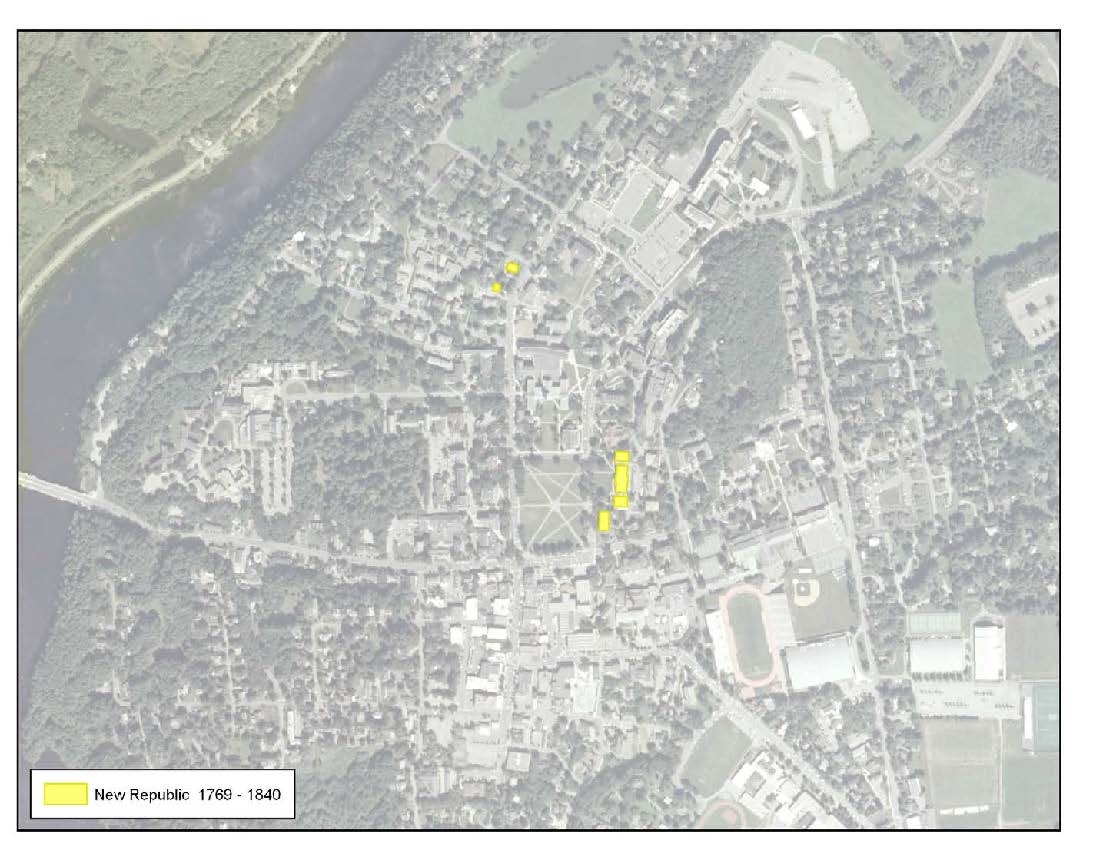 |
The Romantic Period 1841-1893
Campus planning was now a recognized activity.
As the college grew in complexity during the Romantic Period, the construction of College Park and a movement to an eclectic style in buildings served the College less well as neither was in line with the mission of the school. Romantic buildings refer stylistically to a distant past rather than to the context at hand, thus sometimes can look out of place.
Surviving structures: 7 (including Wilson and Rollins anchoring two corners of the Green)
|
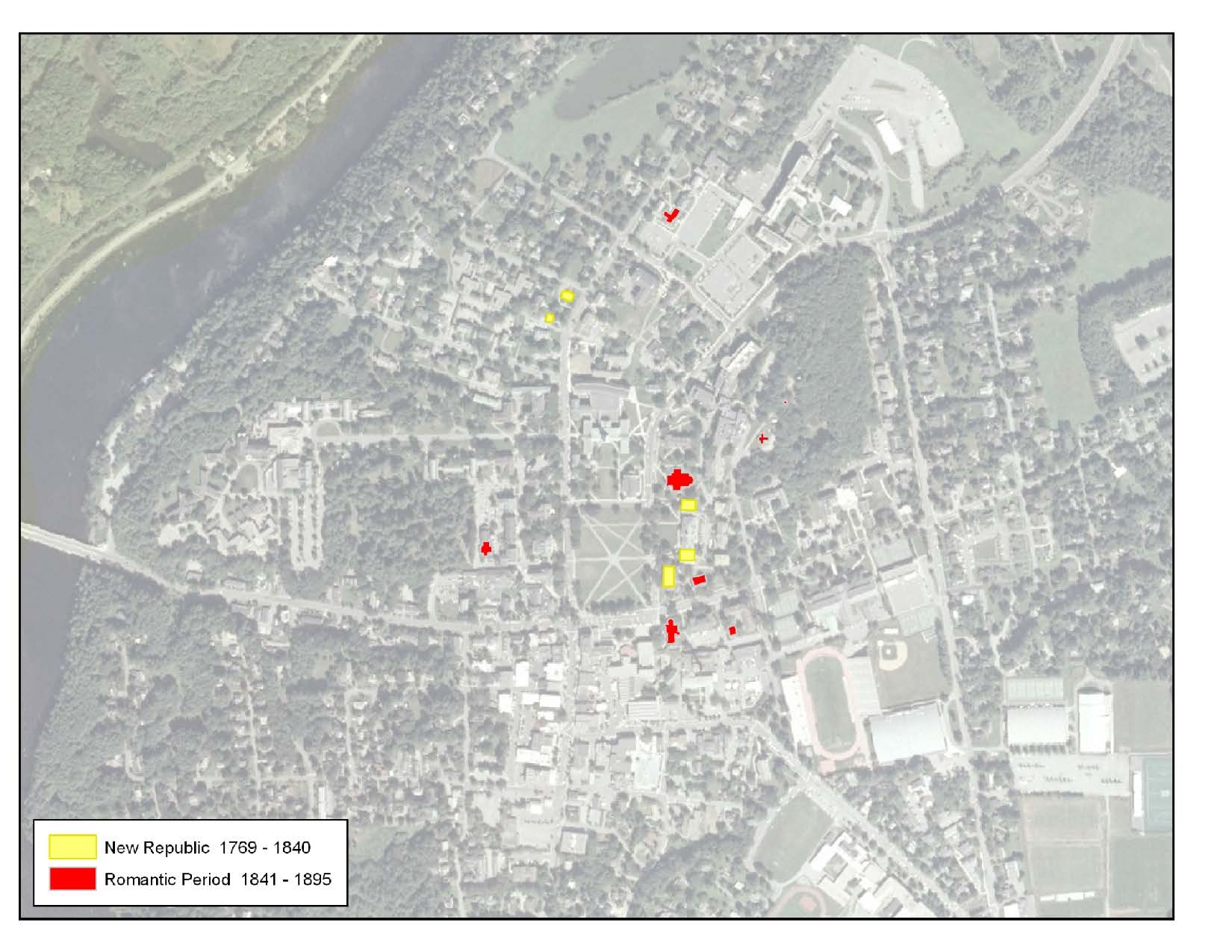 |
The Beaux Arts Period 1893-1940
The Beaux-Arts period saw the development of the modern college, with new complexities in knowledge, research and teaching resulting in new complexities of open space and buildings.
The adoption of the nationwide Georgian-style held all this together. Notable planners and architects John Russell Pope and Jens Frederick Larson impart us important planning principles that included monumental scale, formal organization around axes, grand architectural expression, and close integration between buildings and open space.
Surviving structures: 56 (most notably Baker library that became the second icon of the College)
|
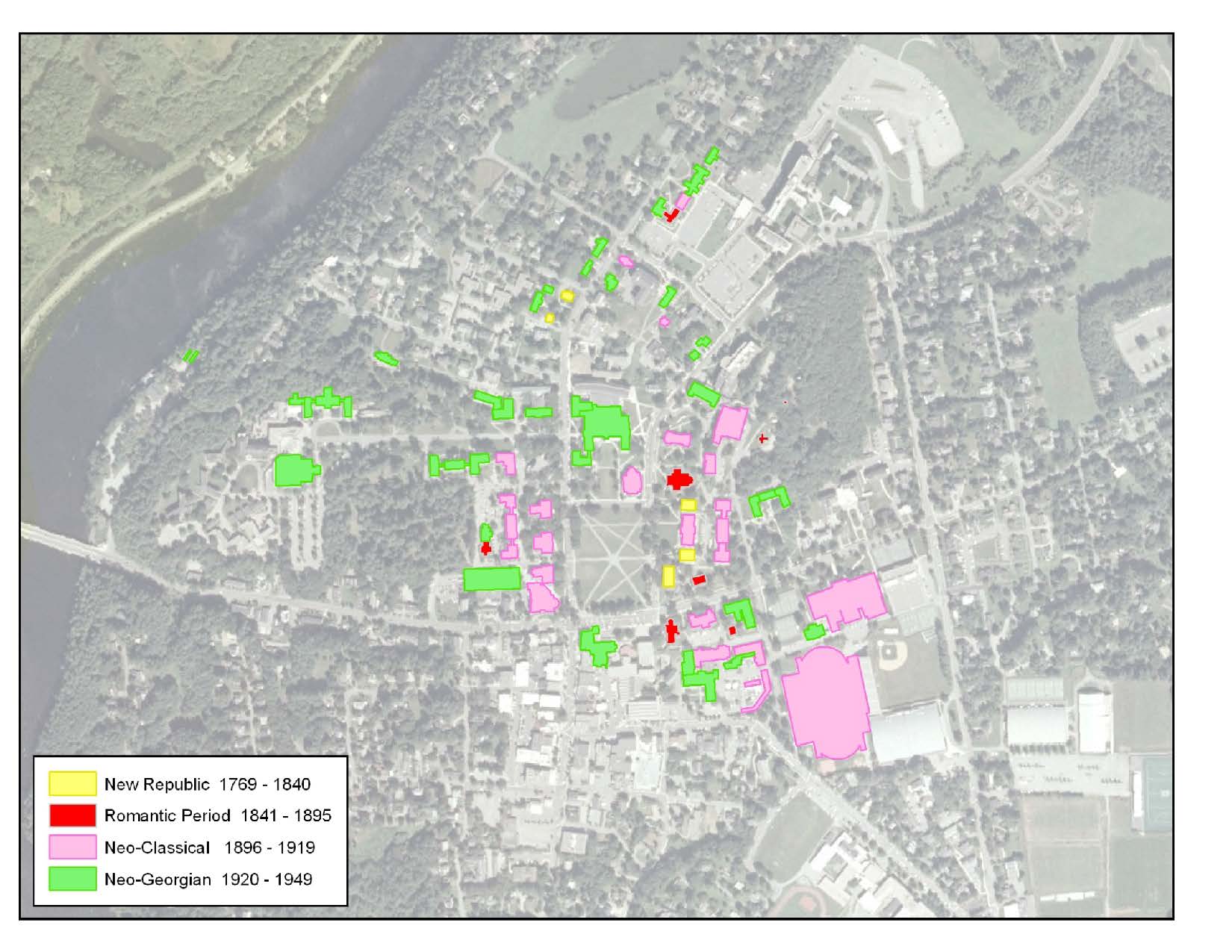 |
The Modern Period 1950-1983
Planners and architects in this period stressed functionalism and creative architectural expression. Architecture was regarded first as an art form hence while Modernist could build a perfect building, they might not be as successful in integrating them into an existing largely Georgian campus due to the lack of significant adjoining open spaces. The Hopkins Center, Fairchild Tower and Berry Gym may be exceptions.
Surviving structures: 39 including the Hopkins Center, Fairchild Tower and Berry Gym
|
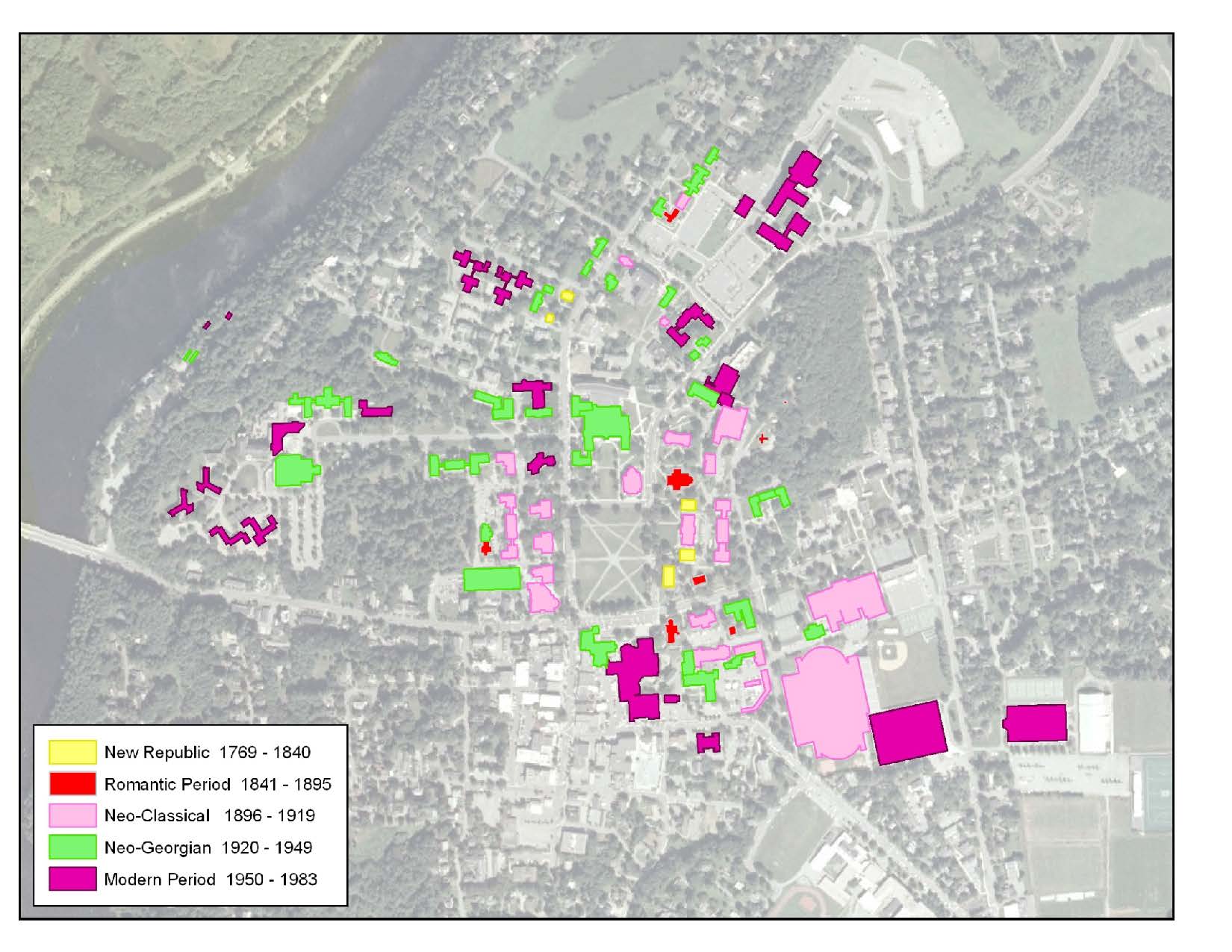 |
The Post modern Period 1983-1999
Architects tried to find a better balance between buildings as works of art and buildings as definers of open space and symbols of institutional character. They also rediscovered the importance of history and context in informing design decisions.
Hence, while the buildings are contemporary, they succeed in making visual connections with the core campus while creating places of their own.
Surviving structures: 11 including Rockefeller and the Hood Museum
|
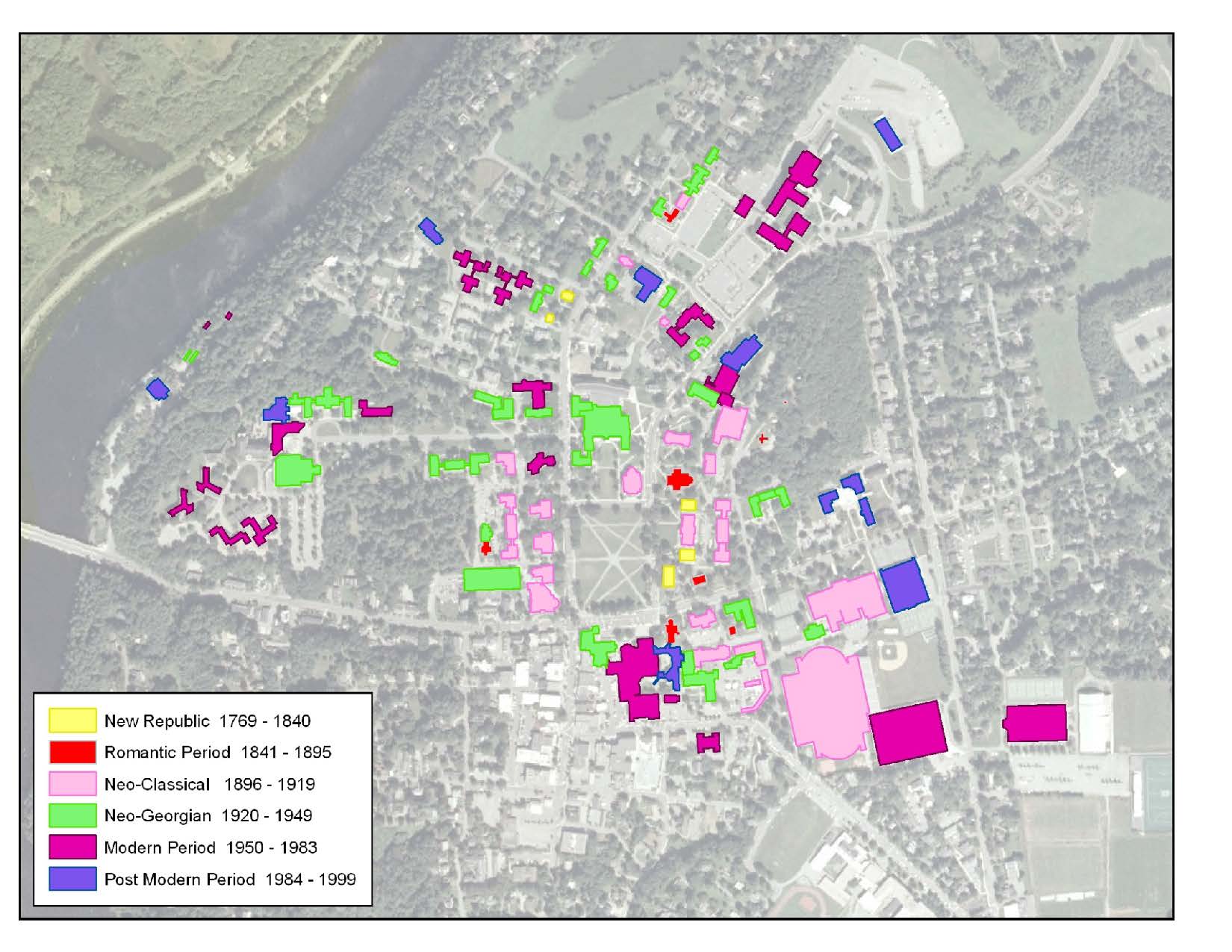 |
21st Century 2000-
The campus has seen its most significant growth in the beginning of 21st century with 30% of the campus' square footage built over the past decade. Dormitory construction boomed during the early twenty-first century to reinforce the college's sense of community. In addition, the school-wide dining halls, has re-emphasized the undergraduate experience.
Master Planner and architect Lo-Yi Chan'54 made a point of fitting new works respectfully into the existing campus rather than an expanding the boundaries of the campus.This infill strategy has enabled the campus to maintain walkable and human scale as well as preserving the town neighborhoods and wooded environments that surround the campus.
|
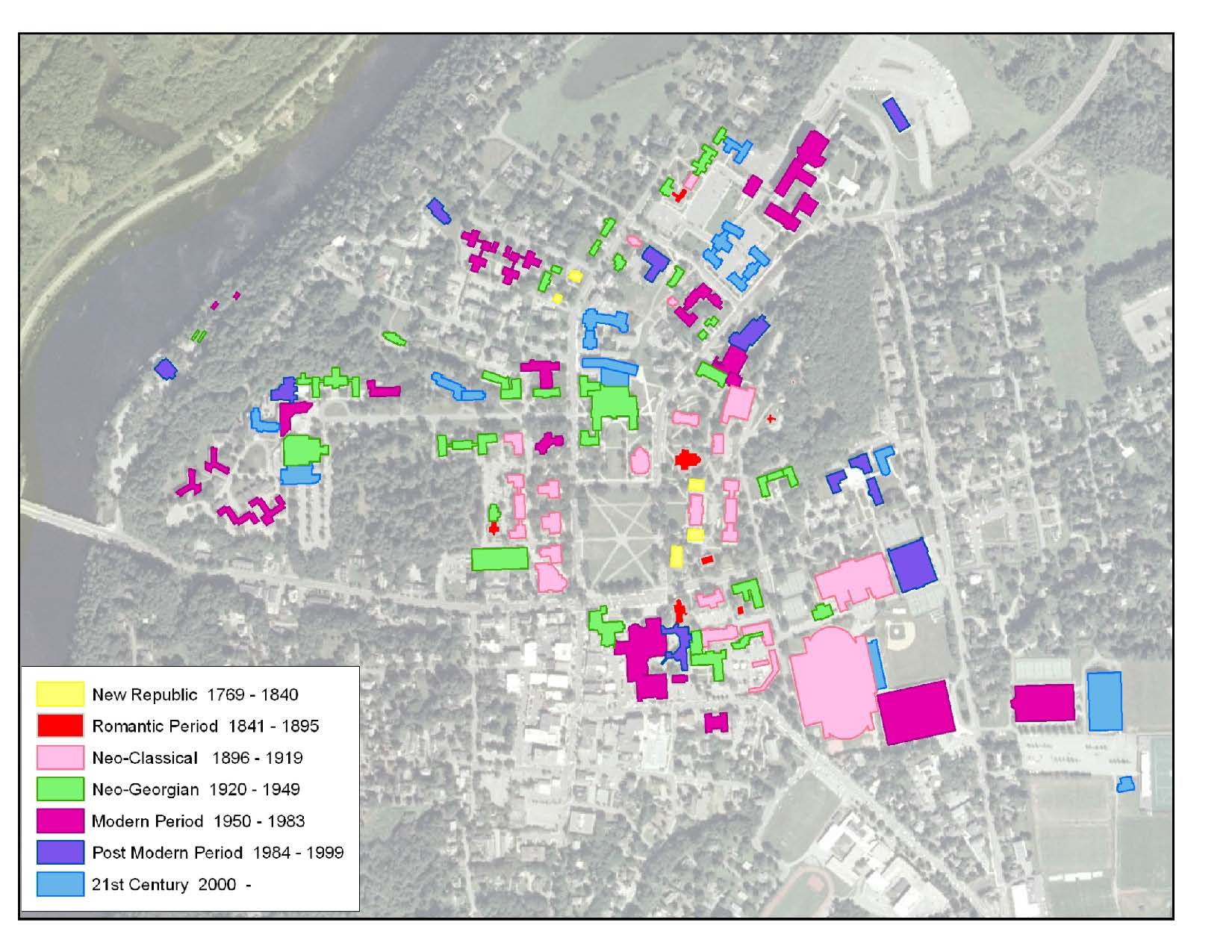 |
adapted from "capsule history of the campus" of 2002 Campus Master Plan; slides by Stewardship Technologies (2007).
|

